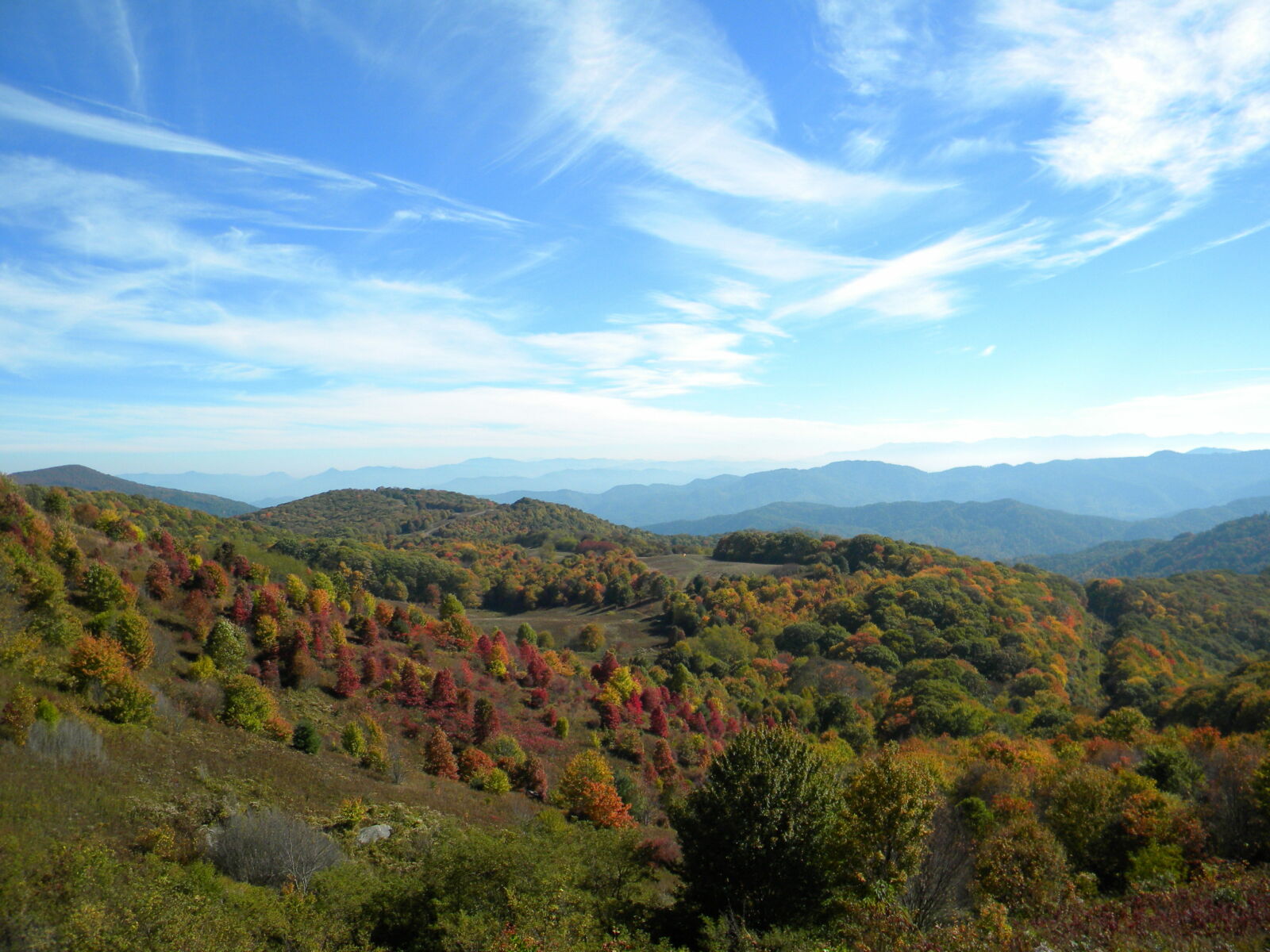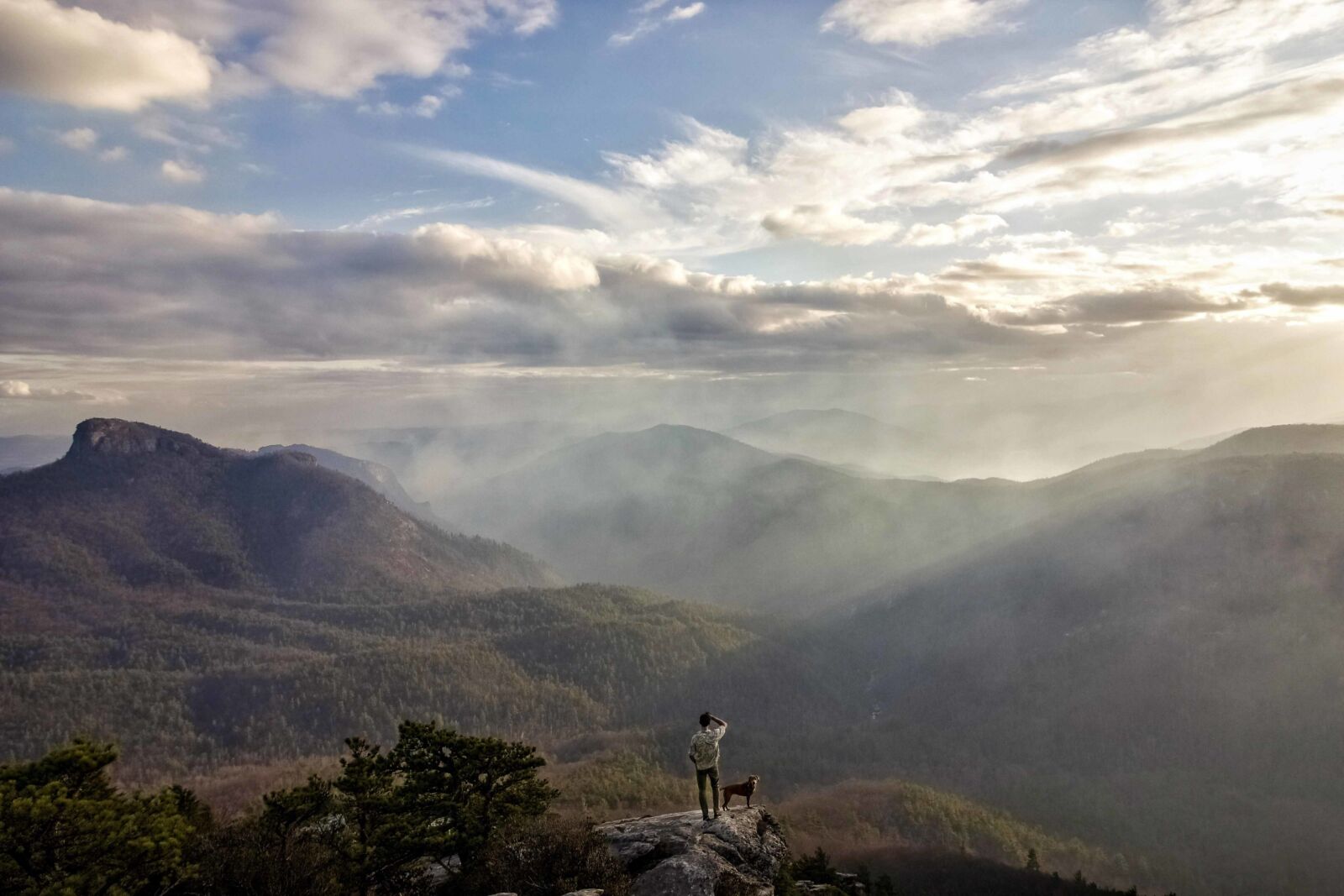They are even acknowledged as the birthplace of America’s forest management: When George Vanderbilt sought refuge from city life in the late 1800s, he chose a picturesque valley in western North Carolina for his mountain home, the Biltmore Estate, where he hired a young Gifford Pinchot to manage his vast property.
But when the industrialist built the Biltmore, these forests looked very different then they do today. As early as the 1880s, logging companies had removed most of the valuable timber from New England and the Great Lakes region and were buying and logging forests in the Pacific Northwest and the Southeast, including the forests of western North Carolina. Eastern farmers who had exhausted their lands and had moved west also left behind land prone to fire and erosion. The abandoned farms and badly cut-over forests became known as “the lands that nobody wanted.”
Recognizing the important ecologic value of restoring forests on “the lands that nobody wanted,”
Vanderbilt hired Pinchot to create America’s first forestry management plan for his 100,000-acre estate. It was here that Pinchot honed his skills, developing methods to maximize sustainable timber production while simultaneously protecting the natural waterways and other abundant natural resources.
So successful was Pinchot in managing the Biltmore Estate that he was recruited by the federal government to assist Teddy Roosevelt’s vision of a national forest service to manage vast tracts of wild forests throughout the country.
Pinchot is regarded as the “father of modern forestry” for the practices he first initiated in the mountains of western North Carolina – specifically, structured management of natural resources combined with conservation.
Biodiversity and Water Hotspots
The Nantahala and Pisgah National Forests cover a unique landscape, spanning across the Southern Appalachian Mountains. Diverse ecological systems, from southern pine to northern hardwood forests, support an unusually high number of flora and fauna species, as well as a high number of endemic species. The region includes some of the largest intact blocks of forest in eastern North America, which provide habitat for neo-tropical migratory birds, black bear and other wide-ranging mammals, as well as timber and other resources for local and regional industries.
Mile-high Peaks
The Pisgah National Forest is a land of mile-high peaks, cascading waterfalls and heavily forested slopes. Comprised of 512,000 acres, the Pisgah is primarily a hardwood forest. Elevations reach over 6,000 feet and include some of the highest mountains in the eastern United States. Mount Mitchell, in Mount Mitchell State Park, is the highest mountain east of the Mississippi River at 6,684 feet, and is surrounded by the Pisgah National Forest. The Forest also includes tracts surrounding the city of Asheville, the city of Brevard and land in the French Broad River Valley.

Photo by Cody Edrington
In the Pisgah, a variety of recreational opportunities are available for every interest, age and skill level. Containing three official Wilderness Areas, including two of the first Wilderness Areas designated in the East, Linville Gorge and Shining Rock, the Pisgah offers solitude and seclusion. Among the thousands of miles of trails on the Forest, 138 miles of the Appalachian Trail weave across the Forest’s peaks and valleys, making it a prime hiking and backpacking destination. Other popular activities include fishing, rock climbing, camping, mountain biking, hunting, skiing, leaf watching, and whitewater sports.
Land of the Noonday Sun
The Nantahala National Forest was established in 1920 and lies in the mountains and valleys of southwestern North Carolina. Elevations in the Nantahala range from 5,800 feet at Lone Bald in Jackson County to 1,200 feet in Cherokee County along the Hiwassee River below Appalachian Lake Dam. The word “Nantahala” is a Cherokee word meaning “land of the noonday sun.” The name is appropriate as, in some spots, the sun only reaches the floors of the forest’s deep gorges when directly overhead.
Adjacent to Great Smoky Mountains National Park, the Nantahala is the largest of the four National Forests in North Carolina. Within its boundaries are three designated Wilderness Areas and two Wild and Scenic Rivers. Visitors enjoy a wide variety of recreational activities from whitewater rafting to camping. Much of the paddling occurs on the Nantahala River, which flows through the Forest. With over 600 miles of multi-use trails, opportunities exist for hikers, campers, mountain and road bikers, equestrians, and off-highway vehicle riders to spend a lifetime exploring the Forest. But it’s not all about backcountry forays; much of the Nantahala National Forest can be enjoyed from the highway. Both the Waterfall Byway and the Cherohala Skyway wind through its hardwood forests, across mountain ridges, and alongside deep river gorges.
Mild-to-Wild Recreation For All
Recreation has always been an important draw to the region. A summer resort destination in the early 1900s, these National Forests have transformed into a year-round playground for outdoor enthusiasts and are some of the most visited in the National Forest System. Their proximity to major population centers, including Charlotte, North Carolina and Atlanta, Georgia, provide an easy sojourn for millions of people.
Adventurers hike along the peaks of the Black Mountains, the highest in the East. Linville Gorge Wilderness Area offers world class rock climbing. Sliding Rock gives kids of all ages a once-in-a lifetime experience on a natural waterslide. Tsali Mountain Bike complex is the top destination for mountain biking in the eastern U.S. The Nantahala River provides visitors with a wild whitewater rafting ride. Shady campsites and mellow hikes bring generations of families to the Forests. Unfortunately, while the visitor use at these sites is ever increasing, the existing recreation system is not able to handle these uses sustainably.

Photo by Melanie Miller.
Native American Connection
To a remarkable degree, the native peoples of early settlement times still inhabit the Southern Appalachians and still seek to play a role in determining its future. Many inhabitants of the Southern Appalachians identify themselves as Cherokees; others claim Creek, Catawba, Sioux or other indigenous heritage.
Today, the Eastern Band of the Cherokee, the part of the Nation that escaped the Trail of Tears, still holds to Cherokee language, traditions, and land in western North Carolina. They remain uniquely “at home” near the creation site identified in their legends and maintain an important claim on the history and future of these Southern Appalachian forests. The Forest Service works hard to interpret and honor the heritage of these indigenous people.
Ecological Threats
Over the last 30 years, as population and visitation has increased in the area, so has the demand for clean water and expanding recreation opportunities. Yet, infrastructure around the Forests, mostly constructed in the 1950s, is degraded and failing. Areas of the Nantahala and Pisgah with the highest visitation are being “loved to death.” Today’s forest managers wrestle with providing access to recreation sites that cannot accommodate the volume of visitors and with maintaining trails originally built in unsustainable locations that are causing damage to sensitive natural resources.
These regional treasures are at risk from overuse, as well as threats from insects, disease, invasive species and fire. Declining Forest Service budgets and the increasing cost of fighting wildfires limit the ability of the Forest Service to address these threats.
While the challenges facing these National Forests are great, the community support and stewardship opportunities to reverse these trends are even greater.
As part of our national Treasured Landscapes, Unforgettable Experiences conservation program, we recently designated the Nantahala and Pisgah National Forests as a Treasured Landscapes conservation site, making it one of our highest-priority locations for work. Through grants and contracts to local community groups and businesses, the NFF will help restore forest resources while increasing the collective capacity of local groups to engage in hands-on stewardship and recreational improvements. Investing in the Great Outdoors, as the campaign is called, will focus on iconic recreation locations on the Nantahala and Pisgah National Forests. These sites play an important role in the overall health of the Forests, so they are critical opportunities for restoration and stewardship.
Whether one is seeking escape from the hyper-connected realities of 21st century life, the chance to stand awestruck atop sweeping vistas, or the adrenaline rush from action-packed adventure, the Nantahala and Pisgah National Forests are a fulfilling destination. This treasured landscape is truly a monument to nature’s timeless splendor, its ability to recover, and mankind’s role in forest conservation.
Learn more about our work on the Nantahala-Pisgah National Forests.

